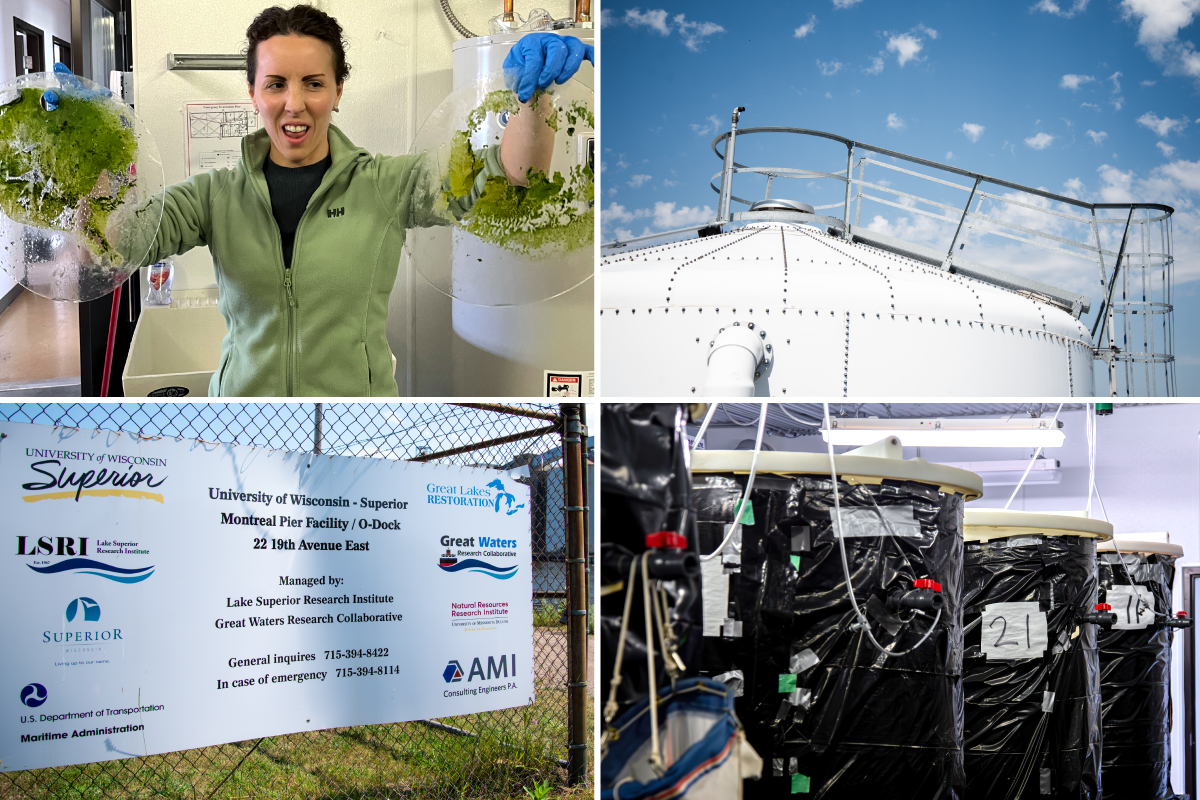Photos: Abigail Latanich at the Montreal Pier Facility in Superior, WI. Photos Ben Austin, Abigail Latanich.
In a small research facility on the Superior Harbor basin, Abigail Latanich is growing algae in simulated lakes. As a research assistant at the Natural Resources Research Institute, Abigail is testing whether simulated lake environments can predict if non-native microorganisms can establish themselves in Lake Superior.
Abigail, a master’s candidate with UMD’s Water Resources Science program, works at the Montreal Pier Facility, operated by the University of Wisconsin-Superior Lake Superior Research Institute. There she creates mini-lake environments, or mesocosms, with lake water pumped from the harbor. Non-native protists are added to these mesocosms and observed over time.
“It can take up to an hour a slide,” Abigail said of one of over 600 samples she’s analyzed in the last year.
Algae are single-celled organisms that are neither animal, plant nor fungi. Algae play a natural role in many ecosystems. Yet, with an estimated nine billion gallons of ballast water dumped into Lake Superior every year, invasive species inevitably enter the lake.
“I like how everything works together to maintain a balance unique to a specific space and time,” she said. “When there's a change in a system it tends to ripple and impact everything else in unexpected ways.”
Abigail’s simulated environment method would allow harbor managers to determine safe levels of non-native protists in dumped ballast water. Exterminating all organisms in a ballast tank is challenging, but as long as organism numbers are low enough they can’t establish themselves. Abigail hopes to find that critical cutoff.
Abigail has been working with NRRI since 2021. Prior to her time at NRRI, she worked as a chemist for the Environmental Protection Agency doing aquatic toxicology research. Currently, she plans on staying in Duluth.
“I love it here. I enjoy the work environment at NRRI and everyone on our Paleo/Phyto team,” she said. The paleolimnology team studies aquatic sediment and the phytoplankton team studies algae. Both are paramount to answering ecological questions in the Great Lakes.
Abigail plans to continue phytoplankton research after her master’s defense, ideally with the same team.
“The mesocosm study has taught me so much more about troubleshooting, organization, communication, and brute resourcefulness than I initially imagined,” said Abigail. “Not to mention the excitement over what I'll get to see under the microscope.”
